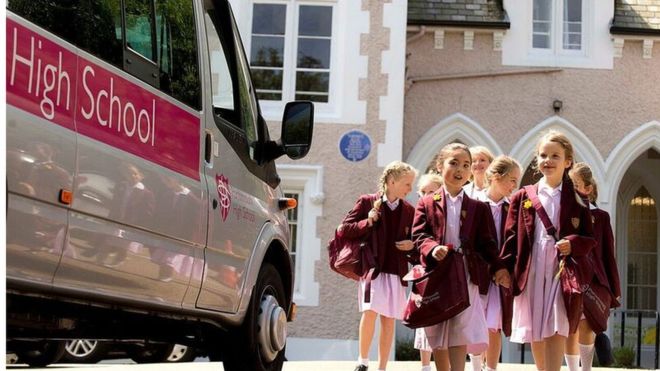Private schools in England propose 10,000 free places

Independent schools could help fund 10,000 new places for children from lower-income families, following government calls for them to do more to justify their charitable status.
The proposal forms part of the Independent Schools Council’s (ISC) response to the government’s consultation, ‘Schools that work for everyone’, which also outlines plans to expand academic selection in the state system.
The ISC plan would see the government contribute the cost of a state school place to educate children in existing independent schools, with the fee paying schools funding the rest of the cost.
The new places would be free for parents. It echoes the assisted places scheme, brought in by the Conservatives in 1980 to provide places in independent schools for bright working class children, but abolished by Labour in 1997.
The ISC said the places would be available across age groups and schools, and there would be a range of assessment criteria.
The organisation also proposed that groups of independent schools co-sponsor new state-funded schools. It said this would be in partnership with a state school or multi-academy trust lead, and could focus on one or more of the six DfE-identified opportunity areas, which have been labelled ‘cold spots’ for social mobility.
The response to the consultation also says fee paying schools could expand their existing support for state schools.
ISC chairman Barnaby Lenon said: "In its Green Paper the government recognised the great strength and success of independent schools and asked what more we could do on top of the contribution our schools already make.
The proposals we are putting forward go considerably further than some of the ideas the Green Paper suggested and by helping create more good school places, both in state and independent schools, we would be helping to expand real social mobility in this country.
Speaking on a programme, he denied the fee-paying sector had a poor record fulfilling its charitable obligations.
In 2011, the ISC went to tribunal over new rules forcing fee-paying schools to demonstrate how their activities help the public.
Mr Lenon said this was not an attempt to overthrow the regulations bit that the council was instead trying to “establish clarity”.
When challenged that the proposed 10,000 new places it could jointly-fund with the government was small compared to 2.5 million children in English schools, he said it was a still a “pretty large number relative to the size of the independent sector”.
He added it “could have a very big impact on some areas, and in particular on individual families”.
Image Source : http://ichef-1.bbci.co.uk/news/660/cpsprodpb/A366/production/_92903814_portsmouthhighschoolgdst.jpg
Post Your Comments for this News
Related Articles
-
Tips for Teaching Coding in Classroom
2017-06-16 12:39:35
-
How to Prepare for Student Orientation Day
2017-05-18 12:53:05
-
World Day for Cultural Diversity for Dialogue and Development.
2017-05-18 10:27:42
-
Big Data for Big Impact #WTISD-17
2017-05-17 09:28:16



